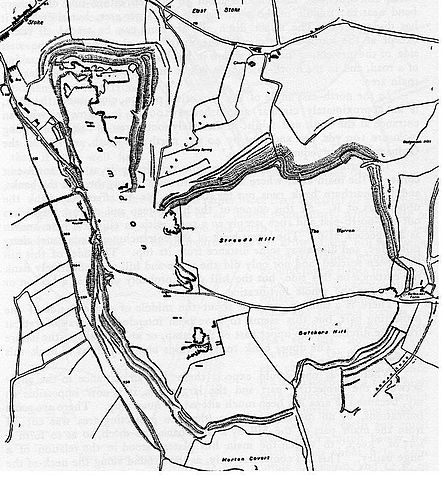This morning Martin Hesp at the news site This Is Devon UK reported on the findings of archaeologists working at the Ham Hill Hillfort:
The complex contours of Ham Hill – the steep-sided escarpment that looms high above the A303 near Stoke-Sub-Hamdon in Somerset – have always evoked impressions of a rich and busy ancient past, but now archaeologists can reveal that the ridge once played host to the largest Iron Age fort in Britain. Researchers from the University of Cambridge have been studying the massive defensive works, which cover more than 80 hectares, for the past three years in an attempt to understand more about their function, and how such a large structure was defended by the local population.Read more about the excavation here
Now the final round of excavations at Ham Hill have revealed more about how the fort was developed by its defenders in response to the Roman invasion. The university team has concentrated on the final phase of construction, which occurred towards the end of the Iron Age and was probably a response to the fact that Roman legions were marching north and west from the English Channel. Despite the scale of fortifications, archaeologists now believe the place was attacked and that the invaders did breach the defences.
"There is obvious evidence of violence and assault in the ramparts – researchers found de-fleshed and chopped-up human remains dating back to the time of the Roman Conquest," a spokesman from the university told the Western Morning News.
"A wide variety of tools and weapons have been unearthed, including a bronze dagger and an iron ballista bolt," she said, adding that the final ramparts built at Ham Hill consisted of box-revetted stone defences situated on top of previously built, three to four metre-high earthen banks."
However, previous to the Roman threat, the massive ramparts up on Ham Hill may have been built for non-military purposes...
Wikipedia also has an extensive list of references and sources on this site.
Ham Hill Hillfort


No comments:
Post a Comment